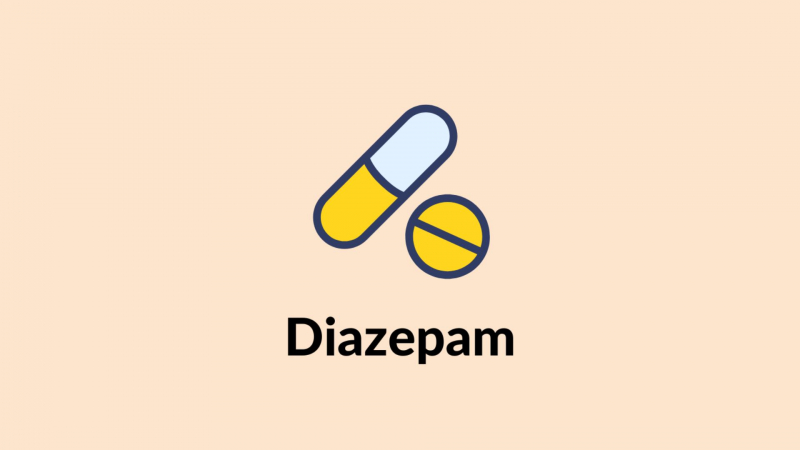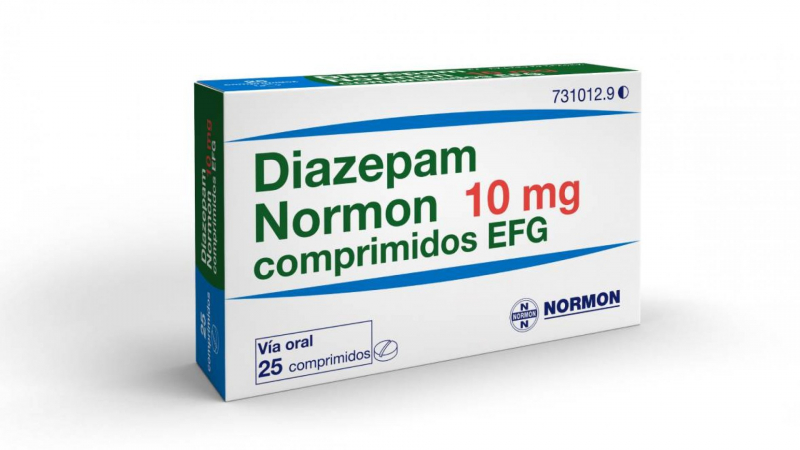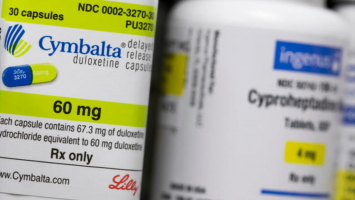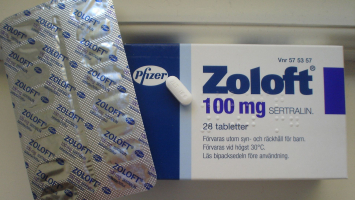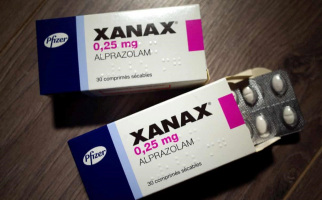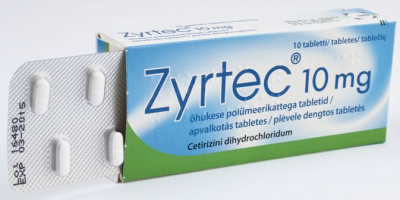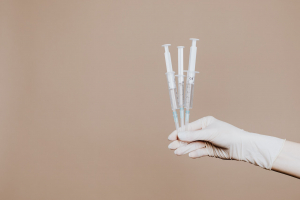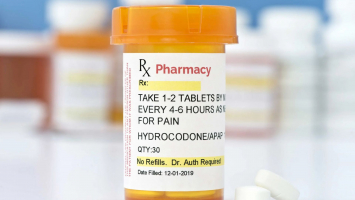Top 8 Things to Know About Diazepam
Diazepam, which was initially sold under the brand name Valium, is a benzodiazepine medication that has anxiolytic properties. Numerous problems, such as ... read more...anxiety, seizures, alcohol withdrawal syndrome, muscle spasms, sleeplessness, and restless legs syndrome are frequently treated with it. Additionally, it could be administered during several medical operations to impair memory. If you are interested in this drug, don't skip this post because we will share some things to know about Diazepam.
-
- Diazepam can be used to treat anxiety and seizure disorders temporarily.
- Diazepam works on nerve cells to reduce aberrant brain electrical activity.
- Diazepam has calming and sedative properties and can be used to treat anxiety, as a muscle relaxant, as an anticonvulsant, or for its sedative effects.
- Although experts are unsure of the specific mechanism by which diazepam exerts its effects, they think it does so by tightly binding to the GABA-benzodiazepine receptor complex, increasing the affinity for GABA (a neurotransmitter that blocks impulses between nerve cells in the brain). Anxiety, mood problems, seizure disorders, and pain have all been connected to low GABA levels.
- The group of drugs known as benzodiazepines includes diazepam.

Photo: Google 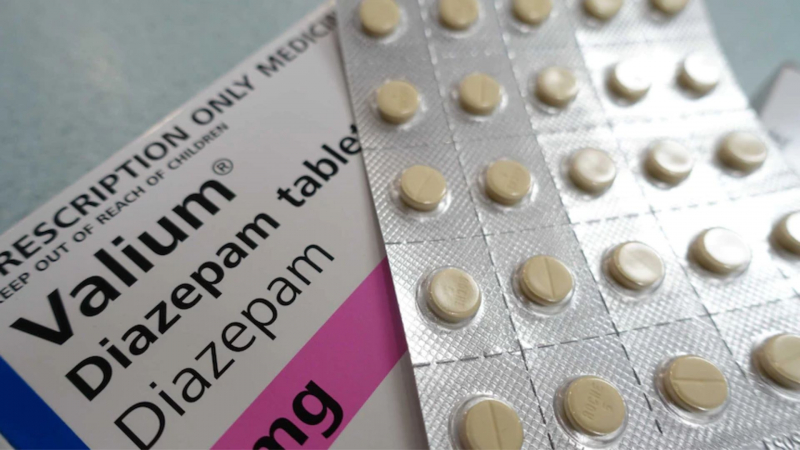
Photo: ABC -
- The main conditions that diazepam is used to treat are anxiety, sleeplessness, panic attacks, and acute alcohol withdrawal symptoms. Additionally, it is employed as a paramedic before several medical procedures to induce drowsiness, anxiolysis, or forgetfulness (e.g., endoscopy). The most popular benzodiazepine for "tapering" benzodiazepine dependence is diazepam because of the medication's relatively long half-life, which enables more effective dose decrease. When overdosed, benzos have a comparatively modest level of toxicity. According to the illness being treated, the intensity of the patient's symptoms, their body weight, and any other ailments they may have, dosages should be decided on an individual basis.
- It is possible to use this substance to treat muscle spasms, alcohol withdrawal symptoms, and anxiety in the short term.
- Combined with other anti-seizure drugs, it can also be used to treat protracted seizures.
- Possibly prescribed for illnesses not recognized by the FDA, or used off-label. The usage of diazepam in these circumstances is typically widely known.
- There is diazepam in generic form.
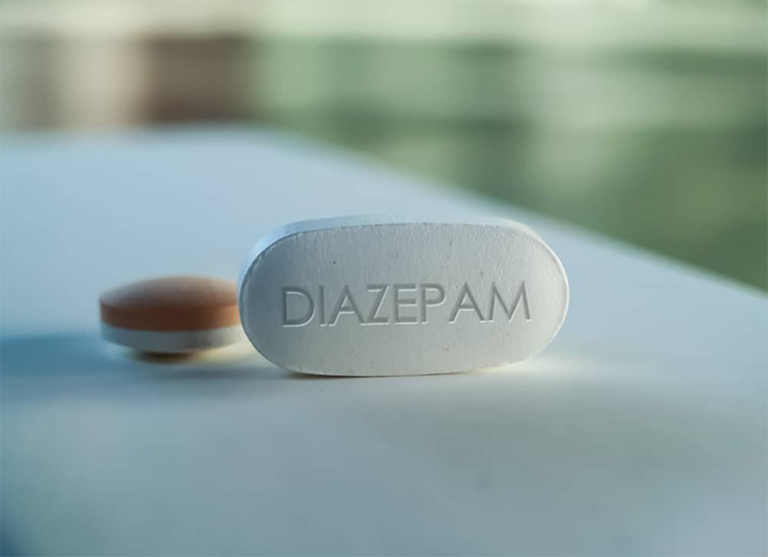
Photo: Google 
Photo: Pokupharma Limited -
You are more likely to have the following side effects if you are between the ages of 18 and 60, do not take any other medications, or have any other medical conditions:
- Weakness in the muscles and unsteadiness when standing up, which all increase the risk of falling.
- May also result in low blood pressure, headaches, nausea, depression, disorientation, and gastrointestinal problems.
- Amnesia has been linked to antisocial behavior and is more likely to happen at higher doses.
- May impede a person's ability to react quickly and drive a car or operate machinery. Skip the alcohol (can enhance the sedative effect).
- Diazepam has the potential to cause both physical and emotional dependence. The shortest amount of time at the lowest dose is ideal. Drug users may look for diazepam suppliers.
- When ending lengthy therapy abruptly, withdrawal symptoms (such as convulsions, tremors, cramping, nausea, sweating, or insomnia) may appear; taper off gradually under a doctor's care.
- may infrequently result in respiratory depression (unusually slow and shallow breathing). When using higher doses of diazepam, in persons who already have respiratory problems, or in combination with other drugs that also cause respiratory depression, the risk is increased (such as opioids).
- Diazepam, like other anticonvulsants, has the potential to raise the risk of suicide thoughts or actions, and this risk may become apparent as early as one week after taking the medication.
- Paradoxical reactions, or those that go against expectations, can occasionally happen. Anxiety, agitation, wrath, disturbed sleep, sexual disinhibition, or hallucinations are some of the symptoms.
- Possible drug interactions include those with opioids, sedatives, alcohol, antipsychotics, antidepressants, or sedative antihistamines, as well as clozapine, probenecid, and valproate.
- Some persons, such as those with pre-existing respiratory conditions (including COPD or sleep apnea), acute narrow-angle glaucoma, a history of drug or alcohol misuse, those at high risk of falling, pregnant women, or those with kidney or liver problems, may not be a good fit. The effects of diazepam may be more noticeable in the elderly or weak. Women who are on benzodiazepines shouldn't breastfeed their infants.

Photo: Insight Surgical Hospital 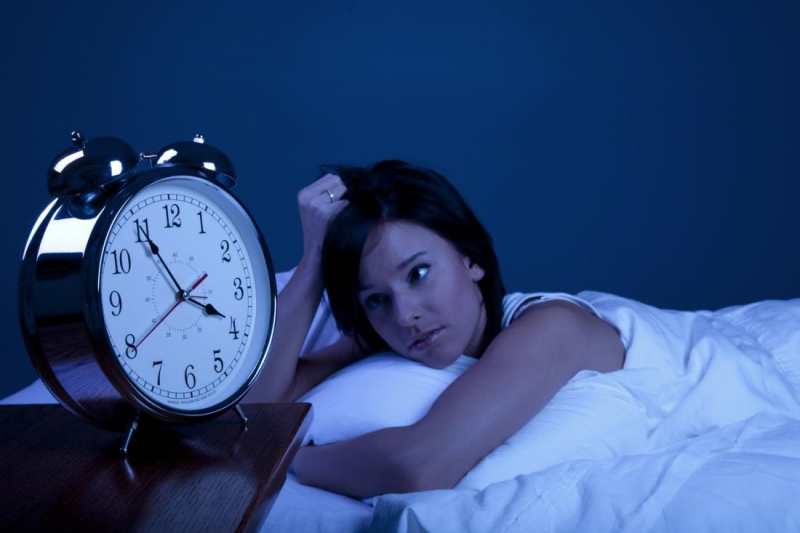
Photo: Medical News Today -
- Both with and without meals are acceptable. ingest whole while sipping water
- Precisely as prescribed by your doctor. Do not alter the dosage without consulting your doctor first. Possibly divided into two doses, with the larger amount administered right before bed, but see your doctor first. Avoid stopping diazepam abruptly if you've been taking it for a while since withdrawal symptoms (such as impaired vision, sleeplessness, sweating, and, infrequently, seizures) could occur. On how to gradually reduce the dose, your doctor will provide you advice. Keep away from any possible drug users.
- While taking this medication, avoid operating machinery, operating a vehicle, or engaging in other activities that call for mental alertness.
- Avoid using diazepam and grapefruit products together since they may raise blood levels of the drug.
- Use only the accompanying calibrated dropper to combine the concentrated oral solution (Diazepam Intensol) with liquids or semisolid meals (such as water, applesauce, or puddings).
- Seek medical help if you have paradoxical effects (the reverse of what is intended), which have been documented as over-excitation, anxiety, hallucinations, sleeplessness, and wrath.
- When taking diazepam, refrain from consuming alcohol since it may intensify the sedative and respiratory depression side effects.
- Diazepam may cause you to feel lightheaded, which could increase your risk of falling. After lying down, take caution when getting up or sitting down.
- Consult your doctor if you believe you have developed a dependency on or addiction to benzodiazepines.
- Without first confirming that they are compatible with diazepam with your pharmacist or doctor, do not take any additional drugs, including those purchased over-the-counter.
- Consult your doctor if your mood changes or if you develop depression or a worsening of depression.
- If you are allergic to diazepam or other benzodiazepines like alprazolam, lorazepam, or oxazepam, do not use it.
- Diazepam should not be started or stopped during pregnancy without first consulting your doctor.
- The typical dosage is
Anxiety: 2 mg, 3 times day; this can be increased to 5 mg to 10 mg, 3 times daily
Sleep issues (associated to anxiety): 5 mg to 15 mg, once daily at bedtime
Adult muscle spasms: 2 mg to 15 mg daily. This can be taken in dosages ranging from 1 mg administered twice daily to 5 mg taken three times daily. For muscle spasms in children (ages 1 month to 17 years), the dose can be increased to up to 20mg, taken three times per day, if necessary. Typically, it is taken twice daily, with a 10–12 hour gap between each dose.
- Take the missing dose of diazepam as soon as you remember if you routinely take it, unless it's almost time for your next dose. Simply skip the missing dose in this situation and take your subsequent dose at the scheduled time. Never take two doses at once. Never take a second dose to make up for one you missed. Set an alarm to remind you if you frequently forget to take your medication. You could also seek assistance from your pharmacist on additional strategies for maintaining medication remembrance.

Photo: Addiction Resource 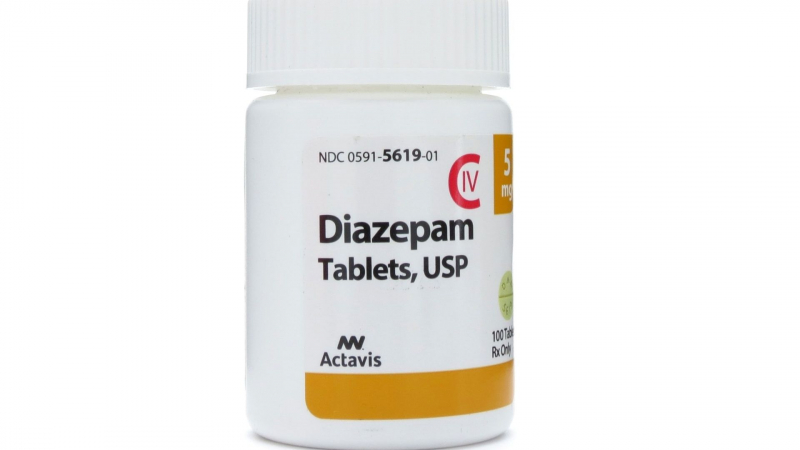
Photo: McGuff Medical Products -
If diazepam is taken concurrently with another medication, consideration should be given to any potential pharmacological interactions. Diazepam's effects should be used with caution when combined with barbiturates, phenothiazines, opioids, and antidepressants, to name a few. Both the activity of hepatic enzymes and the metabolism of other substances are unaffected by benzodiazepines. There is no proof that long-term use of diazepam changes its own metabolism. The pace at which diazepam is metabolized can be changed by substances that have an impact on hepatic cytochrome P450 pathways or conjugation. With long-term diazepam medication, these interactions should be most prominent, albeit their clinical importance can vary.
The negative effects of diazepam, such as sleepiness and vertigo, may be made worse by alcohol.
Typical drugs with which Diazepam may interact are:
- Anti-anxiety drugs, such as benzodiazepines like lorazepam and oxazepam, as well as others
- anticonvulsants such as valproate
- antidepressants, such as amitriptyline, imipramine, nortriptyline
- antihistamines that cause sedation, such as diphenhydramine
- barbiturates
- duloxetine
- monoamine oxidase inhibitors, such as selegiline, isocarboxazid, or phenelzine
- opioid analgesics such as codeine, oxycodone and morphine
- oral contraceptives
- muscle relaxants such as cyclobenzaprine
- probenecid
- scopolamine
- sleeping pills, such as zolpidem
- some medications used to treat mental illness, such as clozapine and thioridazine
- theophylline.
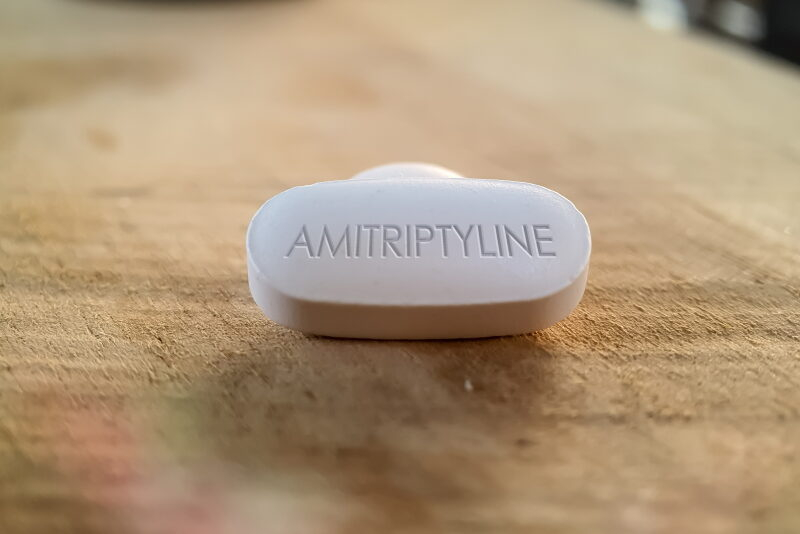
Photo: Sport Doctor London 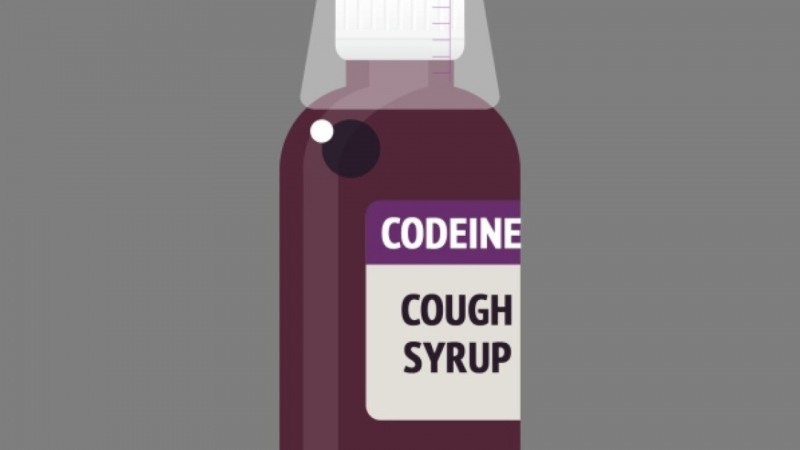
Photo: KMTV -
In the four hours following a suspected overdose, a person who has taken too much benzodiazepine commonly exhibits one or more of the following signs:
- Drowsiness
- Mental confusion
- Hypotension
- Impaired motor-functions
- Impaired reflexes
- Impaired coordination
- Impaired balance
- Dizziness
- Coma
A diazepam overdose is regarded as a medical emergency and typically necessitates the urgent attention of medical specialists, even though it is typically not lethal when taken alone. Flumazenil is the remedy for a diazepam (or any other benzodiazepine) overdose (Anexate). Only severe respiratory depression or cardiovascular problems should be treated with this medication. Several doses of flumazenil may be required because it has a short half-life and diazepam's effects can persist for days. It can also be required to use artificial respiration and stabilize cardiovascular processes. Although it is not usually recommended, activated charcoal can be used to clean the stomach after a diazepam overdose. Emesis is not recommended. Dialysis has a very low effectiveness. Levarterenol or metaraminol are both effective treatments for hypotension. Alcohol, opiates, or other depressants may constitute lethal combinations with a diazepam overdose.
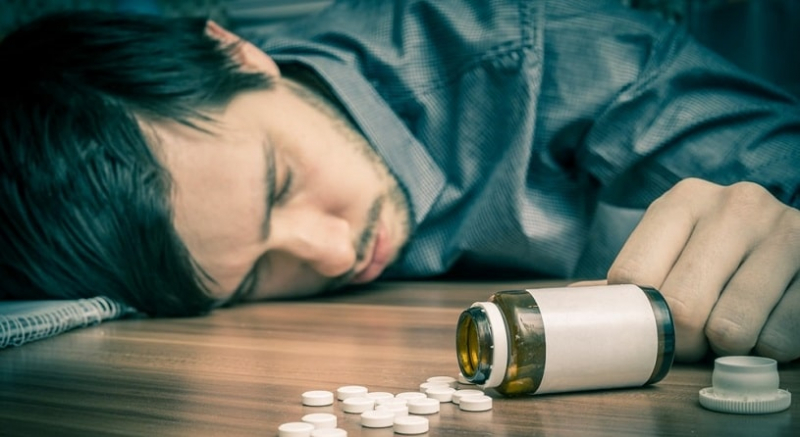
Photo: Addiction Resource 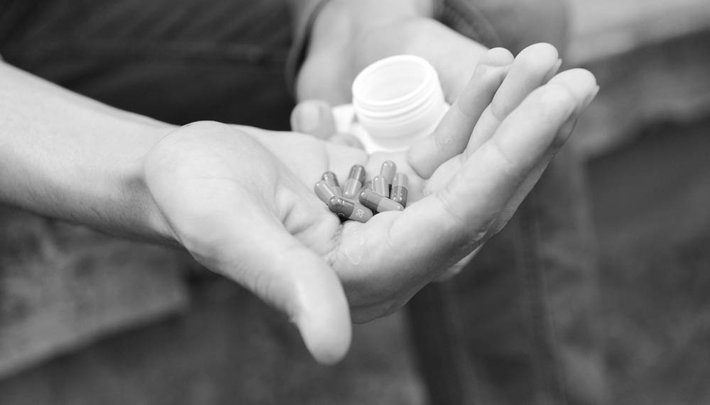
Photo: Narconon -
When giving benzodiazepines to those who have psychiatric illnesses, alcoholism, drug addiction, or both, caution should be taken to prevent abuse and overuse.
Except for the treatment of epilepsy and pre- or postoperative care, this treatment is typically not recommended for patients under the age of 18 years. For this group of patients, the lowest effective dose should be utilized. Diazepam shouldn't be administered to infants younger than 6 months old because its safety and effectiveness have not been determined.
Apnea or cardiac arrest may occur in elderly or seriously unwell patients. Use of additional central nervous system depressants concurrently raises this risk. For this population, the minimum effective dose ought to be applied. Even at identical blood plasma levels, older persons are more vulnerable to the effects of benzodiazepines and metabolize them far more slowly than younger adults. It is advised to keep diazepam dosages about half of what is given to younger patients and to keep treatment to a maximum of two weeks. For older patients, long-acting benzodiazepines like diazepam are not advised. Due to a significantly elevated risk of falls in older people, diazepam can also be harmful.
Benzodiazepines, like diazepam, are lipophilic and quickly permeate membranes, allowing for rapid entry into the placenta and substantial drug absorption. Floppy newborn syndrome can occur if benzodiazepines, such as diazepam, are used in late pregnancy, especially at high doses. Diazepam use in the third trimester of pregnancy increases the chance of a severe benzodiazepine withdrawal syndrome in the newborn, which can include symptoms including hypotonia, refusal to suckle, apneic episodes, cyanosis, and poor metabolic reactions to cold stress. Sedation in the newborn and floppy infant syndrome can also happen. It has been documented that the signs of newborn benzodiazepine withdrawal syndrome and floppy infant syndrome can last for weeks or even months after birth.

Photo: Children's Mercy 
Photo: Clinical Advisor









